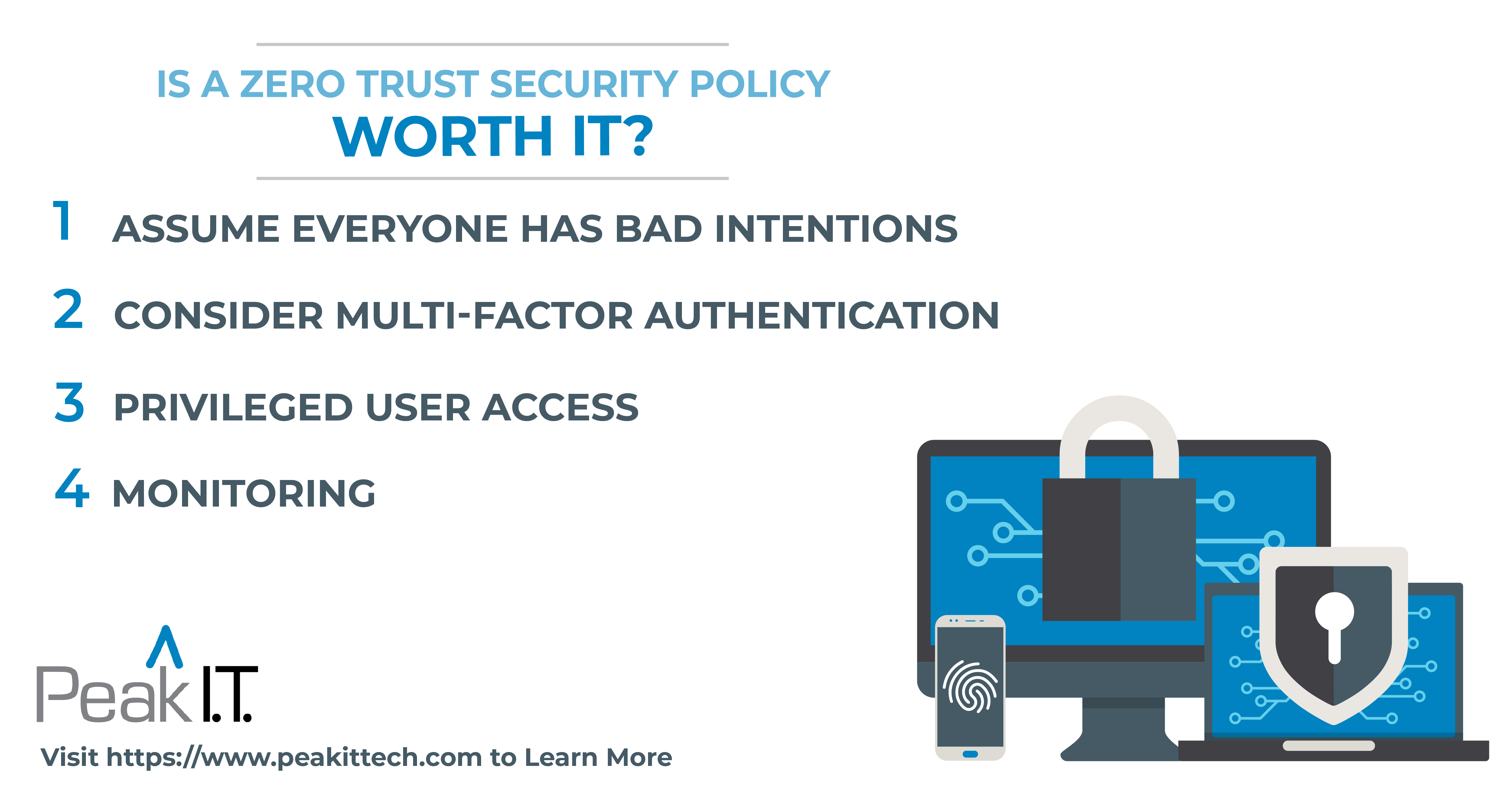Assuming that everyone trying to access your information has malicious intent might seem a little too precautionary, right? Well, it might not be that crazy in a world where someone is constantly after your information. If you don’t know already, the world just described is the one that we’re living in today. On average, an information security breach happens every 39 seconds, affecting one in three Americans every year. So, a zero trust policy might not be the worst idea ever.
For those that don’t know, a zero trust policy involves a lot of protection to your accounts. Any person trying to access an account will have to go through a strict verification process to get into the account. Some of the verifications will include two factor authentication and possible approval from an administrator on the account. If you are within the network parameter or not, the strict guidelines will apply. Today, we will go into detail about why a zero trust security policy may be a good idea.
Assume everyone has bad intentions
This is the basic principle in the zero tolerance policy. Assume everyone is out to get you. Do not blindly trust anyone. This eliminates trust within an organization, but not in a detrimental way. Trust is nonexistent rather than lost in a zero trust architecture. With everyone having to be given access when trying to view, edit, and search through your company’s information, there’s no need to worry about who may have access to your accounts. This way, anyone with access to your network will be approved and people with lackluster passwords or don’t worry about security within your organization won’t be a liability.
Multi-Factor Authentication
Two factor authentication is a great way to securely log into accounts and grant access to those who need access to your accounts. If permission is always needed to access an account, you will know exactly who is in the account. You can deny access and take action accordingly if your password has been compromised.
Instead of just two factor authentication, multi-factor authentication offers more steps in verifying a user. This will also provide more security to the accounts that you are trying to protect.
Privileged User Access
This type of access will make it so that not every user has equal access to all information even after they have been authenticated to log in. If a salesperson shouldn’t have access to your company’s finance documents, then they won’t be able to get access. This will make it easier for your I.T. team to know where a breach started. Your sensitive information is always at risk, so protecting it should be top priority.
Monitoring
This should be standard, but monitor your accounts! Always check to ensure that your security measures are working and all of your team is on board for whatever plan you have. This will make it easier to point out suspicious activity and spot a potential breach of your information.
With a zero trust security policy, your information should be locked down at all times. While verifying each and every user and limiting everyone’s access, it will be much more difficult for your information to leak.
To find out how we can help, contact us today!

